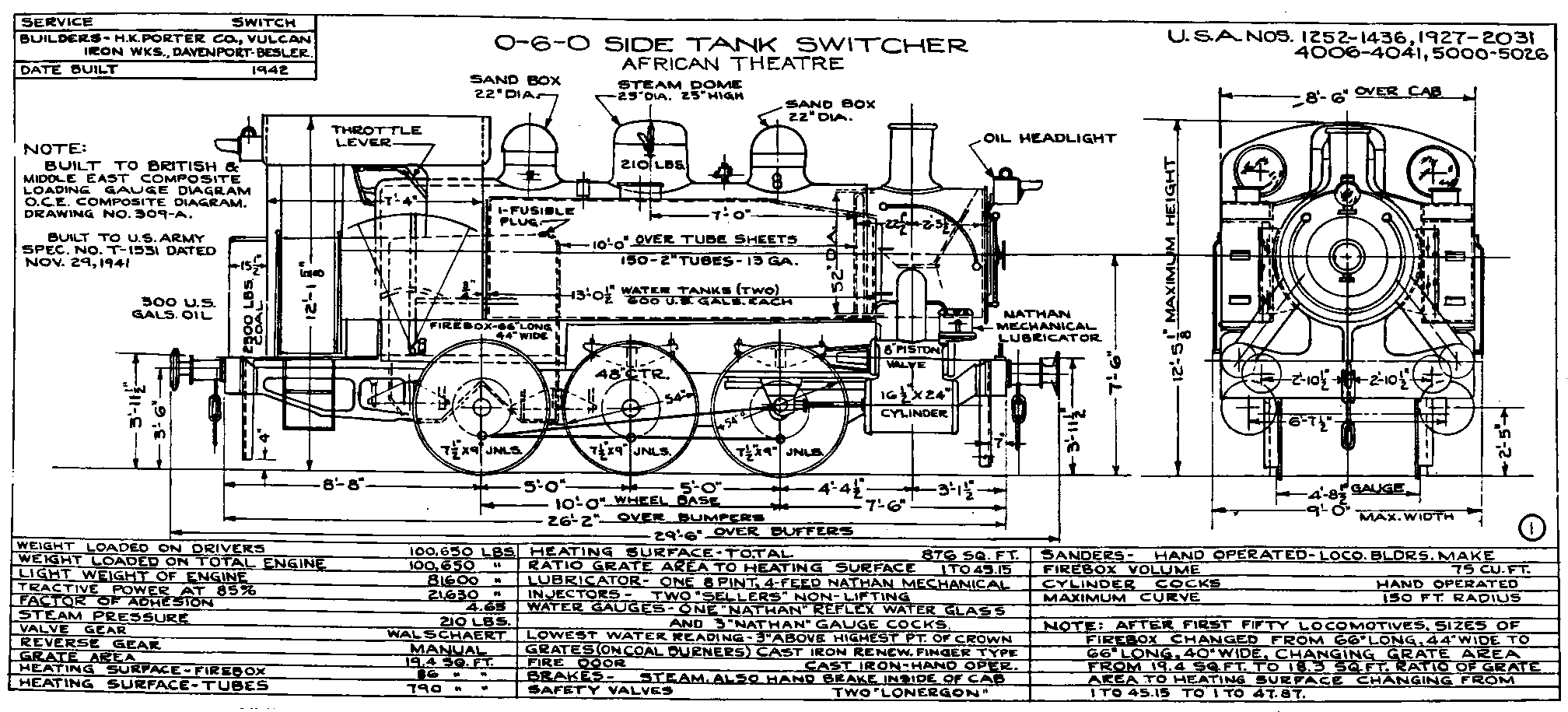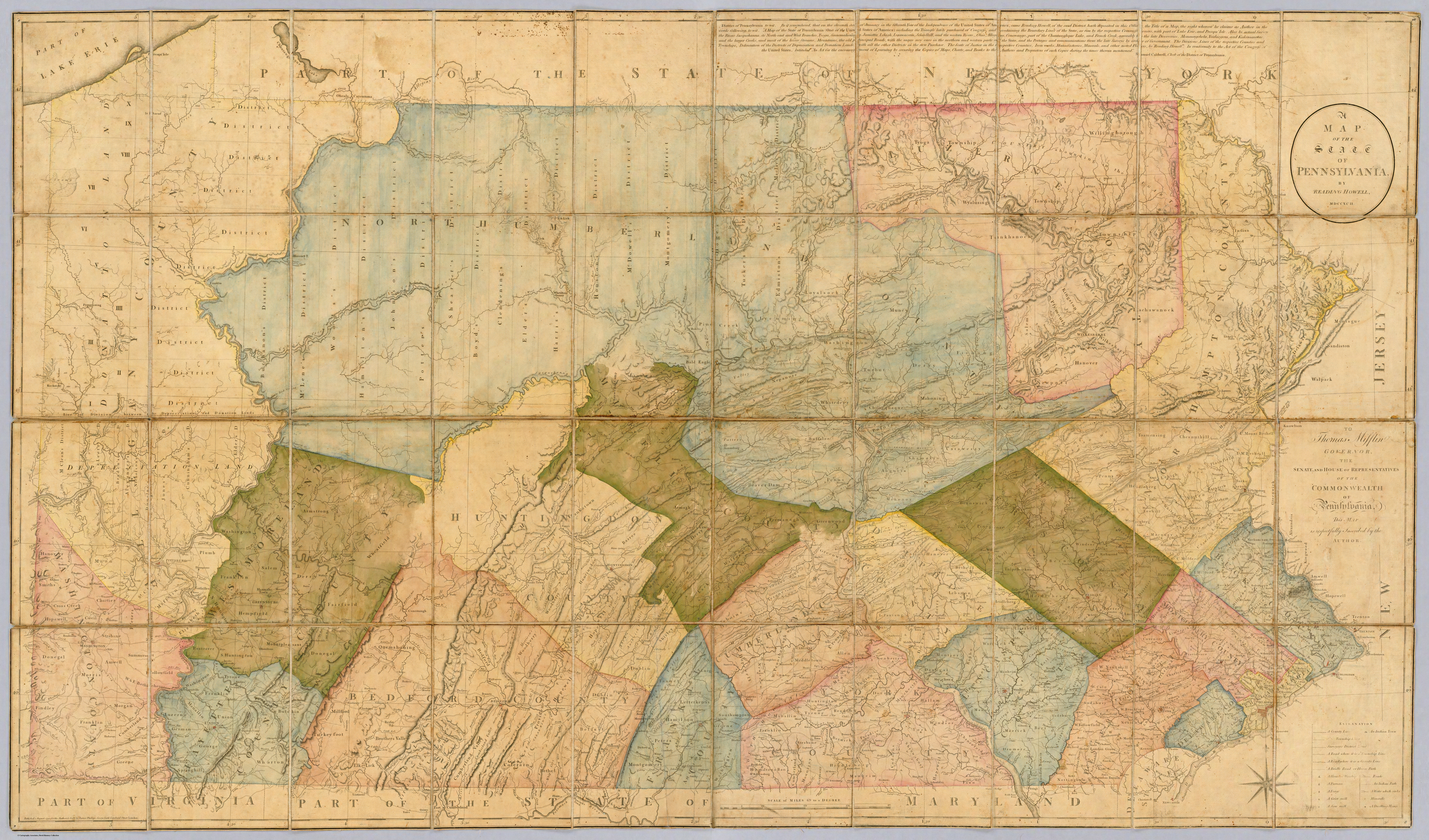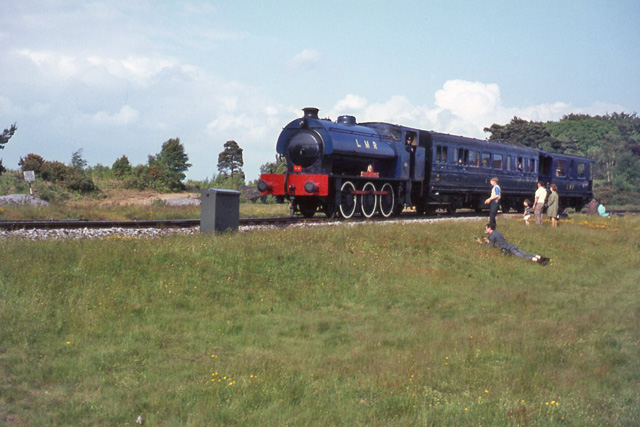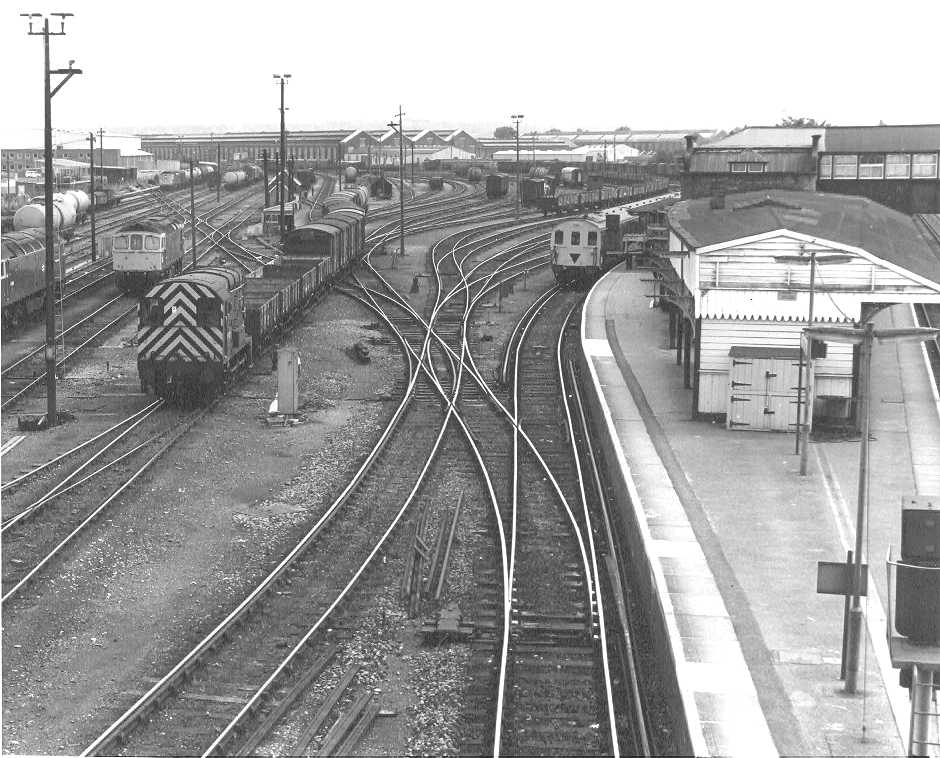|
SR USA Class
The SR USA class are some ex-United States Army Transportation Corps S100 Class steam locomotives purchased and adapted by the Southern Railway (SR) after the end of the Second World War to replace the LSWR B4 class then working in Southampton Docks. SR staff nicknamed them "Yank Tanks". Origins The United States Army Transportation Corps built 382 S100 Class 0-6-0 tank engine for use in the Second World War. They were shipped to the British War Department in 1943, and stored awaiting the invasion of Mainland Europe. Most went overseas but some remained in store. By 1946 the SR needed either to renew or replace the ageing B4, D1 and E1 class tanks used in Southampton Docks, but Eastleigh Works was not in a position to do so in a timely manner or at an economic price. The replacement locomotives would need to have a short wheelbase to negotiate the tight curves found in the dockyard, but be able to haul heavy goods trains as well as full-length passenger trains in the harb ... [...More Info...] [...Related Items...] OR: [Wikipedia] [Google] [Baidu] |
Vulcan Iron Works
Vulcan Iron Works was the name of several iron foundries in both England and the United States during the Industrial Revolution and, in one case, lasting until the mid-20th century. Vulcan, the Roman god of fire and smithery, was a popular namesake for these foundries. England During the Industrial Revolution, numerous entrepreneurs independently founded factories named Vulcan Iron Works in England, notably that of Robinson Thwaites and Edward Carbutt at Bradford, and that of Thomas Clunes at Worcester,McKenzie and Holland Ltd, Vulcan Iron Works, Worcester http://www.miac.org.uk/mckenzie.htm Retrieved 12 October 2011 England. The largest of all the ironworks of Victorian England, the Cleveland Works of Bolckow Vaughan in Middlesbrough, were on Vulcan Street. Thwaites & Carbutt, Bradford The Vulcan Works at Thornton Road, Bradford was a spacious and handsome factory. It was described in Industries of Yorkshire as Ley's, Derby The Vulcan Iron Works at Osmaston Road, Derby ... [...More Info...] [...Related Items...] OR: [Wikipedia] [Google] [Baidu] |
War Department (United Kingdom)
The War Department was the United Kingdom government department responsible for the supply of equipment to the armed forces of the United Kingdom and the pursuance of military activity. In 1857, it became the War Office. Within the War Office, the name 'War Department' remained in use to describe the military transport services of the War Department Fleet and the War Department Railways. History In 1794, the position of Secretary of State for War was created. The Secretary's department was at first unofficially known as the War Department. Colonial affairs were later added and it became the Colony Department. After the outbreak of war with revolutionary France it became Colony and War Department and on the restoration of peace in 1815 the Colonial Department. In February 1855, the offices of the Secretary of State for War, and Secretary at War were merged and the new department and became the War Department once again until 1857 when it became the War Office. In 1964, the depar ... [...More Info...] [...Related Items...] OR: [Wikipedia] [Google] [Baidu] |
Pittsburgh, Pennsylvania
Pittsburgh ( ) is a city in the Commonwealth (U.S. state), Commonwealth of Pennsylvania, United States, and the county seat of Allegheny County, Pennsylvania, Allegheny County. It is the most populous city in both Allegheny County and Western Pennsylvania, the List of municipalities in Pennsylvania#Municipalities, second-most populous city in Pennsylvania behind Philadelphia, and the List of United States cities by population, 68th-largest city in the U.S. with a population of 302,971 as of the 2020 United States census, 2020 census. The city anchors the Pittsburgh metropolitan area of Western Pennsylvania; its population of 2.37 million is the largest in both the Ohio Valley and Appalachia, the Pennsylvania metropolitan areas, second-largest in Pennsylvania, and the List of metropolitan statistical areas, 27th-largest in the U.S. It is the principal city of the greater Pittsburgh–New Castle–Weirton combined statistical area that extends into Ohio and West Virginia. Pitts ... [...More Info...] [...Related Items...] OR: [Wikipedia] [Google] [Baidu] |
Wilkes-Barre
Wilkes-Barre ( or ) is a city in the U.S. state of Pennsylvania and the county seat of Luzerne County. Located at the center of the Wyoming Valley in Northeastern Pennsylvania, it had a population of 44,328 in the 2020 census. It is the second-largest city, after Scranton, in the Scranton–Wilkes-Barre–Hazleton, PA Metropolitan Statistical Area, which had a population of 563,631 as of the 2010 census and is the fourth-largest metropolitan area in Pennsylvania after the Delaware Valley, Greater Pittsburgh, and the Lehigh Valley with an urban population of 401,884. Scranton/Wilkes-Barre is the cultural and economic center of a region called Northeastern Pennsylvania, which is home to over 1.3 million residents. Wilkes-Barre and the surrounding Wyoming Valley are framed by the Pocono Mountains to the east, the Endless Mountains to the north and west, and the Lehigh Valley to the south. The Susquehanna River flows through the center of the valley and defines the northwestern ... [...More Info...] [...Related Items...] OR: [Wikipedia] [Google] [Baidu] |
Newbury Racecourse Railway Station
Newbury Racecourse railway station serves the East Fields area of the town of Newbury, Berkshire, England, and the adjacent Newbury Racecourse. It is measured from . It was opened on 26 September 1905. As the station is next to the racecourse it handles heavy traffic and additional trains on race days. Otherwise, the station is served by local services operated by Great Western Railway between and and . Services Newbury Racecourse station is served by local services operated by Great Western Railway from Reading to Newbury. On the current weekly timetable only two or three local services that call at the station continue to Bedwyn. Services are summarised as follows. During race meets or large events at Newbury Racecourse additional trains serve the station. They include a shuttle service to Reading and an extra stop for services that do not normally call at the station. During some races, a special charter calls at the station. The special trains and the shuttle serv ... [...More Info...] [...Related Items...] OR: [Wikipedia] [Google] [Baidu] |
Longmoor Military Railway
The Longmoor Military Railway (LMR) was a British military railway in Hampshire, built by the Royal Engineers from 1903 in order to train soldiers on railway construction and operations. The railway ceased operation on 31 October 1969. Route Authorised for construction from 1902, activities date from 1903 when an gauge tramway was laid to assist in removing 68 large corrugated iron huts from Longmoor Military Camp to Bordon. The railway was relaid to standard gauge in 1905–1907 and was initially known as the Woolmer Instructional Military Railway. It was renamed the ''Longmoor Military Railway'' in 1935. The Liss extension was opened in 1933. The stations and junctions included: *Bordon – the northern terminal, adjacent to Bordon station and with access to British Railways via the LSWR owned Bentley and Bordon Light Railway. * Oakhanger Halt - serving the village of Oakhanger, Hampshire. Bordon station was nearer to Oakhanger and Oakhanger station was nearer to Bordon ... [...More Info...] [...Related Items...] OR: [Wikipedia] [Google] [Baidu] |
Hunslet Austerity 0-6-0ST
The Hunslet Austerity 0-6-0ST is a class of steam locomotive designed by Hunslet Engine Company for shunting. The class became the standard British shunting locomotive during the Second World War, and production continued until 1964 at various locomotive manufacturers. Background The 48150 class were built for the Guest Keen Baldwins Iron & Steel Company in 1937, being an enlarged version of a design dating from 1923. These developed into the 50550 class of 1941–42, with various modifications. At the outbreak of the Second World War, the War Department had initially chosen the LMS 'Jinty' 3F 0-6-0T as its standard shunting locomotive, but was persuaded by Hunslet that a simplified version of their more modern 50550 design would be more suitable. The first locomotive was completed at their Leeds works at the start of 1943. Construction Hunslet subcontracted some of the construction to Andrew Barclay Sons & Co., W. G. Bagnall, Hudswell Clarke, Robert Stephenson and Hawt ... [...More Info...] [...Related Items...] OR: [Wikipedia] [Google] [Baidu] |
Oliver Bulleid
Oliver Vaughan Snell Bulleid Commander of the Order of the British Empire, CBE (19 September 1882 – 25 April 1970) was a British railway and mechanical engineer best known as the Chief Mechanical Engineer (CME) of the Southern Railway (UK), Southern Railway between 1937 and the 1948 nationalisation, developing many well-known locomotives. Early life and Great Northern Railway He was born in Invercargill, New Zealand, to William Bulleid and his wife Marian Pugh, both British immigrants. On the death of his father in 1889, his mother returned to Llanfyllin, Wales, where the family home had been, with Bulleid. In 1901, after a technical education at Accrington Grammar School, he joined the Great Northern Railway (Great Britain), Great Northern Railway (GNR) at Doncaster at the age of 18, as an apprentice under H. A. Ivatt, the Chief Mechanical Engineer (CME). After a four-year apprenticeship, he became the assistant to the Locomotive Running Superintendent, and a year lat ... [...More Info...] [...Related Items...] OR: [Wikipedia] [Google] [Baidu] |
Chief Mechanical Engineer
Chief mechanical engineer and locomotive superintendent are titles applied by British, Australian, and New Zealand railway companies to the person ultimately responsible to the board of the company for the building and maintaining of the locomotives and rolling stock. In Britain, the post of ''locomotive superintendent'' was introduced in the late 1830s, and ''chief mechanical engineer'' in 1886. Emerging professional roles In the early Victorian era, projected canal or railway schemes were prepared by groups of promoters who hired specialists such as civil engineers, surveyors, architects or contractors to survey a route; and this resulted in the issue of a prospectus setting out their proposals. Provided that adequate capital could be raised from potential investors, agreements obtained from the landowners along the proposed route and, in Britain, an Act of Parliament obtained (different terminology is used in other countries), then construction might begin either by a new compa ... [...More Info...] [...Related Items...] OR: [Wikipedia] [Google] [Baidu] |
Wheelbase
In both road and rail vehicles, the wheelbase is the horizontal distance between the centers of the front and rear wheels. For road vehicles with more than two axles (e.g. some trucks), the wheelbase is the distance between the steering (front) axle and the centerpoint of the driving axle group. In the case of a tri-axle truck, the wheelbase would be the distance between the steering axle and a point midway between the two rear axles. Vehicles The wheelbase of a vehicle equals the distance between its front and rear wheels. At equilibrium, the total torque of the forces acting on a vehicle is zero. Therefore, the wheelbase is related to the force on each pair of tires by the following formula: :F_f = mg :F_r = mg where F_f is the force on the front tires, F_r is the force on the rear tires, L is the wheelbase, d_r is the distance from the center of mass (CM) to the rear wheels, d_f is the distance from the center of mass to the front wheels (d_f + d_r = L), m is the mass ... [...More Info...] [...Related Items...] OR: [Wikipedia] [Google] [Baidu] |
Eastleigh Works
Eastleigh Works is a locomotive, carriage and wagon building and repair facility in the town of Eastleigh, in the county of Hampshire in England. History LSWR The London and South Western Railway (LSWR) opened a carriage and wagon works at Eastleigh in 1891. In 1903, the Chief Mechanical Engineer, Dugald Drummond, oversaw the construction of a large motive power depot in the town; replacing the existing maintenance and repair shops at Northam, Southampton. In January 1910, locomotive building was likewise transferred to the new workshops at Eastleigh from Nine Elms in London. Among the locomotives produced by the LSWR under Drummond at Eastleigh, were the S14 0-4-0 and M7 0-4-4 tank engines, the P14 and T14 4-6-0, and D15 4-4-0, classes. Following the appointment of Robert Urie as Chief Mechanical Engineer in 1912, the works were responsible for the construction of the H15, S15, and N15 (King Arthur) 4-6-0 classes, and the G16 4-8-0, and H16 4-6-0 tank engines. So ... [...More Info...] [...Related Items...] OR: [Wikipedia] [Google] [Baidu] |
Southampton Docks
The Port of Southampton is a passenger and cargo port in the central part of the south coast of England. The modern era in the history of the Port of Southampton began when the first dock was inaugurated in 1843. The port has been owned and operated by Associated British Ports since 1982, and is the busiest cruise terminal and second largest container port in the UK. The volume of port traffic categorises Southampton as a Medium-Port City globally. The port is ten miles () inland, between the confluence of the rivers Test and Itchen and the head of the mile-wide drowned valley known as Southampton Water. The mouth of the inlet is protected from the effects of foul weather by the mass of the Isle of Wight, which gives the port a sheltered location. Additional advantages include a densely populated hinterland and close proximity to London, and excellent rail and road links to the rest of Britain which bypass the congestion of London. The average tidal range is approximately 5 ... [...More Info...] [...Related Items...] OR: [Wikipedia] [Google] [Baidu] |







